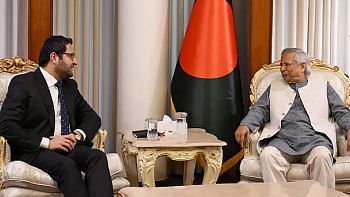We saw the true potential of social media in 2020. Can we capitalise on it for a better world?

Imagine if digital technology and social media were present during the Spanish flu pandemic.
Despite the spread of misinformation that it facilitates, social media has allowed people to stay connected, spread awareness about the pandemic, informed medical professionals and authorities about individuals' perspectives and experiences of the virus, and mobilised communities for acts of kindness. Social media also created the space through which humanitarian and health organisations and authorities could spread accurate information and directives about Covid-19 across the globe—something that was unimaginable during the last global pandemic a century ago.
Similarly, technology and social media platforms helped both people and economies across the globe operate when almost all in-person activities came to a standstill at the beginning of the pandemic. Social media platforms allowed people to continue working from home, facilitated shopping, enabled communications with loved ones, and allowed online classrooms to take hold. Additionally, it facilitated a space through which the youth can engage creatively and forge ways for innovative products and services to reach the market.
Youth globally, including in Bangladesh, were seen turning this crisis into an opportunity, and have started businesses and various social initiatives. From designing and selling customised face masks through Instagram or gathering funds and volunteers to create community kitchens to feed the poor, social media allowed young entrepreneurs to reach audiences and customers beyond their inner circles and local communities.
Meanwhile, when countries across the globe went into lockdown and confined people to their homes, it provided the young with the time and scope to enhance and learn new skills—from cooking and baking, to coding and editing—and gave them the tools and confidence to become what they had long wanted, whether it was to become an entrepreneur or an influencer.
Even though the impact may not be entirely visible just yet, this has also added momentum to a battered economy by creating business opportunities—and as its extension—employment opportunities, through handcrafted jewellery to cloud kitchens, and everything in between.
Others have started channels on traditional social media platforms like YouTube and Snapchat, or newer short video platforms such as Likee, to share their skills in storytelling, cooking, DIY hacks and performing arts, to name a few. Social media has provided the youth with an outlet not just to express themselves, share their talents and skills, and build and interact with communities that share their interests, but also the chance to earn through them.
According to the United Nations, information and communication technology (ICT) has played a critical role in young people's development on a global scale. Around the world, youths have used the power of technology and social media to engage in issues such as climate change, racism, sexual harassment, democratic rights, women's empowerment, and so much more.
With a young national demographic as its driving force, Bangladesh has been reaping the benefits of the exponential growth of social media and and other products of technology, particularly in the last decade. By being active players of the culture, economy and society at large, they have carved their own paths, while at the same time making their voices heard to policymakers.
On the cusp of the glorious golden jubilee of Independence, Bangladesh is looking to shake off the economic fallout of the Covid-19 pandemic and accelerate growth through investment, human capital development and enhanced productivity. Youth engagement through social media and ICT has the power to help the growth of the nation's infrastructure of ICT and achieve the vision for Digital Bangladesh.
It is inspiring to see the youth globally engaged to bring about a transformation of society—from climate to health to politics—and digital technology and social media are at the crux of that. The pandemic has brought to the fore the power and potential of the youth in the digital sphere, and it is up to the decision makers of the world to make sure that it is explored and utilised to its fullest potential.
Samiha Zaman is a communications professional.

 For all latest news, follow The Daily Star's Google News channel.
For all latest news, follow The Daily Star's Google News channel. 



Comments